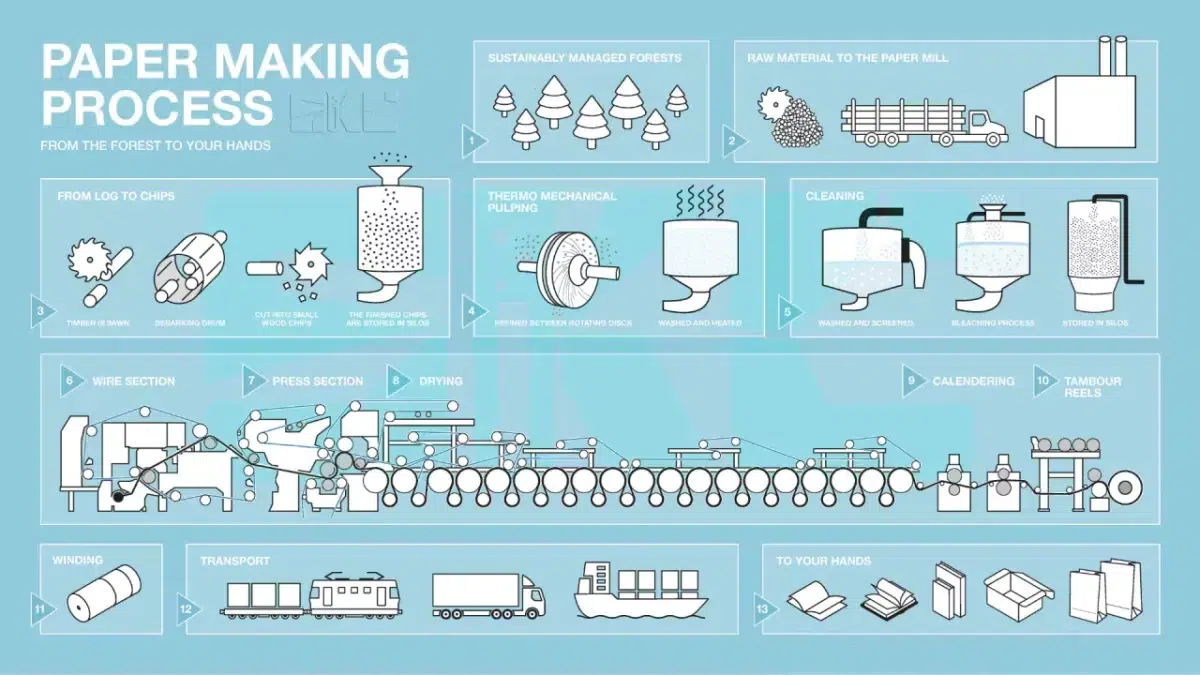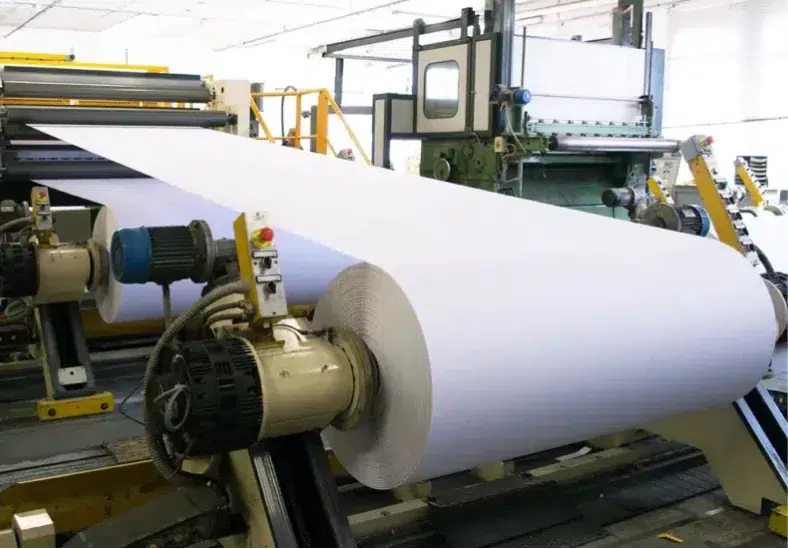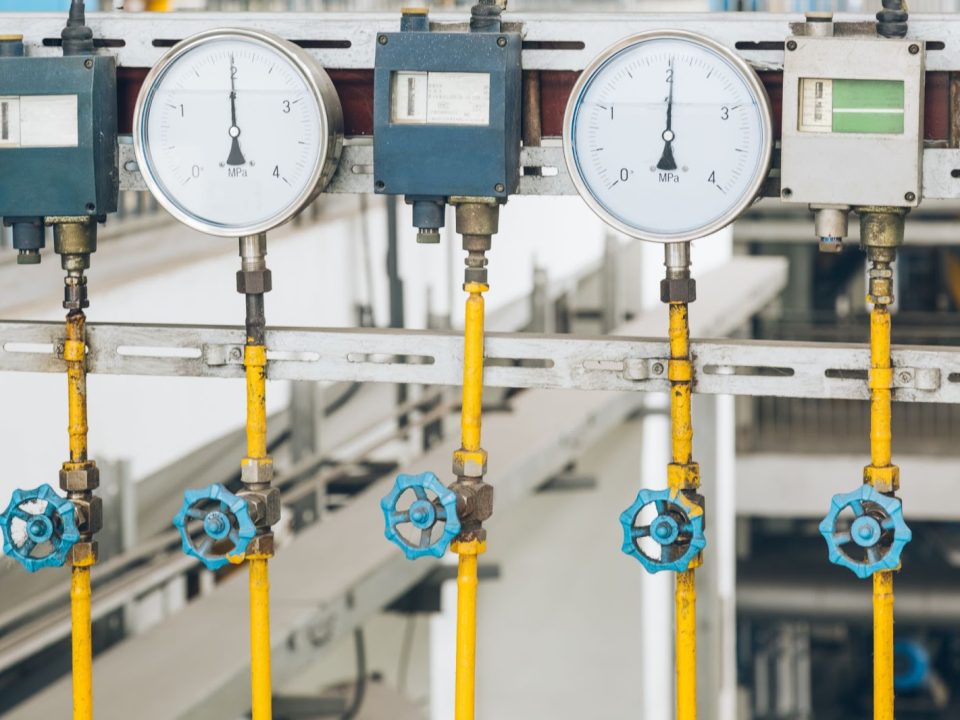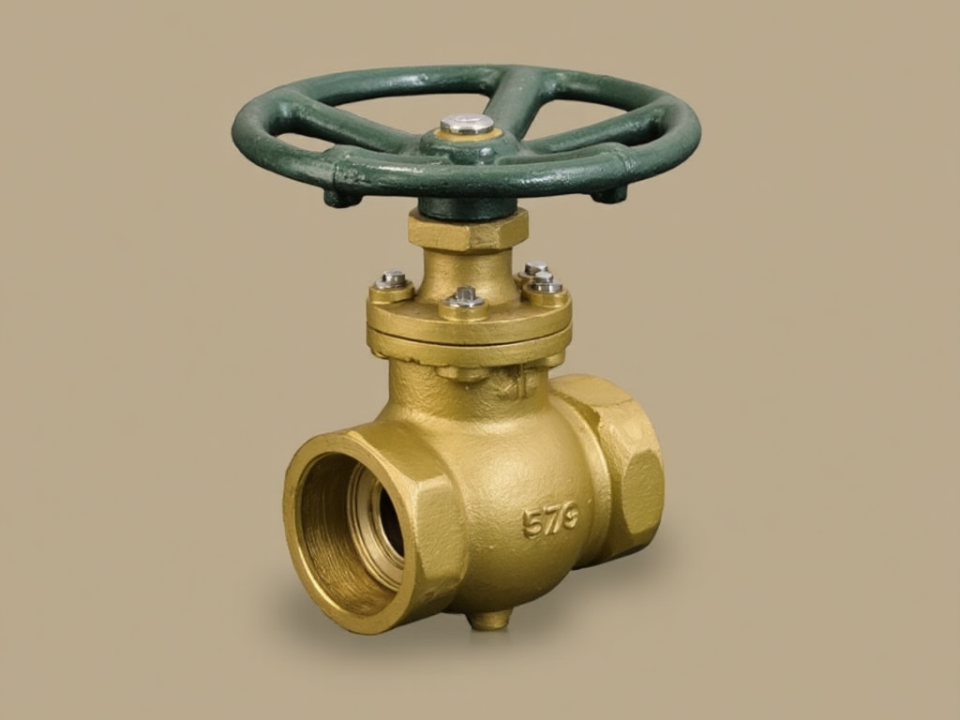The paper-making industry relies on controlling the flow of liquids like water, chemicals, and pulp. Each step requires just the right amount of fluid at the right time. If the flow is too fast or too slow, it can impact the quality of the final paper, leading to waste or delays in production.
To keep things running smoothly, the industry uses industrial ball valves. These valves are strong, reliable, and simple to operate. With a quick turn, operators can start, stop, or adjust the flow of fluids, helping maintain a stable production process from start to finish.
In this article, we’ll explore how industrial ball valves in the paper-making industry work, the advantages they bring to fluid handling, and the specific stages where they play a role.

Looking for an industrial ball valve for the paper-making industry?
Overview of Fluid Handling in the Paper-Making Process

The paper-making process involves moving large amounts of fluids, including water, chemicals, and pulp mixtures. The process begins with breaking down raw materials, like wood or recycled paper, into pulp. This pulp is then mixed with water and other chemicals to create a slurry that flows through the system.
At each stage, the flow of this mixture must be carefully controlled. Too much flow can waste materials and throw off the balance of chemicals. On the other hand, too little flow can slow down production or cause uneven mixing, affecting the final product’s quality.
Fluid handling is crucial for every step of paper-making. Operators must control the flow rate to get the right thickness and consistency in the pulp, ensuring each step works effectively. Industrial ball valves play a key role in managing this flow, providing reliable control that helps prevent issues like overflow or blockages.
Role of Industrial Ball Valves in the Paper Industry
What’s the role of industrial ball valves in the paper industry? Industrial ball valves are a reliable choice for controlling fluid flow in paper mills.
They have a simple but effective design: inside each valve is a ball with a hole through the center. When the hole aligns with the pipeline, fluids pass through; when rotated, it blocks the flow entirely.
This design allows operators to open, close, or adjust the valve with a quick turn. Unlike other valves with more moving parts, ball valves are less likely to fail or wear out quickly. This reliability is essential in the paper-making industry, where equipment often runs continuously to meet production demands.
Ball valves can withstand high pressures and rough conditions, which makes them well-suited for paper mills. Their durable construction allows them to perform consistently, even in challenging environments. By using industrial ball valves, paper mills can count on steady, safe flow control throughout the production process.
Key Advantages of Industrial Ball Valves for Fluid Handling in Paper Production
Industrial ball valves offer specific benefits that make them valuable in the paper industry. Their design and construction provide advantages that improve both safety and efficiency in fluid handling. Here are the key benefits that make them an ideal choice for paper mills.
| Advantage | Benefit |
| Quick Operation | Fast and easy flow adjustments |
| Strong Seal | Prevents leaks, ensuring smooth operation |
| Durable | Resists wear, handles harsh conditions |
| Precise Control | Maintains consistent product quality |
| Low Maintenance | Reduces downtime and repair needs |
| 4o |
1. Quick, Simple Operation
Industrial ball valves are easy to operate, opening or closing with a simple turn. This quick action is helpful when fast adjustments are needed to keep production on track. If an issue arises, operators can respond instantly, stopping or adjusting the flow as needed.
2. Strong Sealing Capability
Ball valves create a strong, tight seal when closed, preventing leaks. This is crucial in the paper-making process, where maintaining the correct levels of water, pulp, and chemicals is essential. By stopping leaks, ball valves help ensure that each step runs smoothly and the mix remains balanced.
3. Durability Against Harsh Conditions
Paper production is demanding on equipment, and valves need to withstand high pressures, abrasive materials, and exposure to chemicals. Ball valves are made from strong materials like stainless steel or brass, which resist wear and tear. Their durability helps them last longer, reducing maintenance costs and minimizing production delays.
4. Precise Flow Control
Ball valves allow for precise adjustments to fluid flow, which is essential in paper-making. Each stage needs the right amount of liquid, whether it’s water, pulp, or chemicals. Precise control helps maintain a consistent product, improving the overall quality of the paper by keeping each step balanced.
5. Minimal Maintenance Requirements
Ball valves have fewer moving parts than many other valve types, so they require less maintenance. This low-maintenance design is valuable in paper mills that operate around the clock, as it reduces the need for frequent repairs. With less maintenance, operators can focus on keeping production steady and efficient.
Industrial Ball Valve Applications in Specific Paper-Making Stages
Industrial ball valves are valuable at different stages of the paper-making process. Here’s a closer look at where and how they contribute:
Pulping Stage
The process begins with breaking down wood or recycled paper into pulp. Ball valves control the flow of water and chemicals that mix with the raw materials. Precise control in this stage is crucial to create a smooth pulp that’s ready for the next steps.
Bleaching and Cleaning Stage
Once the pulp is created, it goes through a bleaching and cleaning process to remove impurities. Ball valves help manage the flow of bleach and water, ensuring the mixture is just right. This step improves the color and cleanliness of the pulp, which is essential for high-quality paper.
Refining and Pressing Stage
In this stage, the pulp’s texture and thickness are adjusted. Then, it’s pressed to remove excess water and reach the right consistency. Ball valves control the amount of water added or removed, which helps ensure the pulp has the correct thickness for making strong, durable paper.
Formation and Drying Stage
The pulp mixture spreads out on a screen, starting to form paper sheets. Water drains away, and the paper begins to dry as it moves through the system. Ball valves control this drainage process and also manage steam flow during drying, which keeps the moisture level balanced and ensures even drying.
Coating and Finishing Stage
In the final stage, some paper may be coated or finished to add texture or gloss. Ball valves control the flow of coating materials to ensure even application. This helps produce a consistent, high-quality finish across large batches of paper, meeting specific industry standards.
Conclusion
In the paper-making industry, managing fluids like water, chemicals, and pulp requires precise control.
Industrial ball valves provide an effective solution for this, ensuring that each stage of the process receives the exact flow needed. Their quick operation, reliable sealing, and durability make them a top choice for fluid handling in paper production. By optimizing fluid flow, ball valves contribute to product quality, operational efficiency, and reduced waste.
Industrial ball valves are built for industries that need precise and durable equipment. They help control flow in tough environments. To learn more about ONERO’s high-quality industrial ball valves, visit our product page or contact us today.




